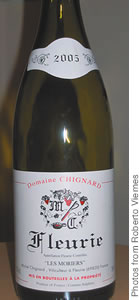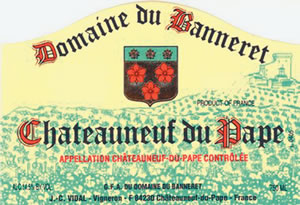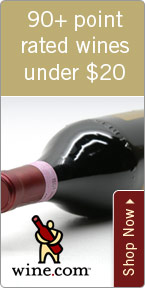The Top Three Versatile Reds

Wednesday - November 05, 2008
| Share
 Del.icio.us
Del.icio.us
|
I took a very interesting poll for a website which is still in its developmental stages this week. One of the questions was, “What red wine varietal do you think is the most versatile with food?” Their choices listed about 10 different grapes: Cabernet Sauvignon, Merlot, Pinot Noir, Nebbiolo, Barbera, Grenache, Sangiovese, Tempranillo, Syrah and “other.”
It asked me to pick my top three. My No. 1 choice is Pinot Noir, of course. You already know how I feel about Pinot Noir and how I love its sexiness and seductive character, its ability to express where it comes from and its versatility with food. That was an easy one.
But I found my second choice was much more difficult. To me Cabernet Sauvignon, Nebbiolo and Syrah can have a hard-edged tannic structure along with"bigness” about them that tend to demand thicker-textured and intensely flavored dishes. So I couldn’t pick any of them. Most Sangiovese and Barbera have a little harder acidity that is great for a lot of food pairings. In many cases, however, it may be too hard.
Merlot is the “chicken” of the wine world. It is the “safe” choice. It is what people most likely drink if they don’t want something as thick and big as Cabernet Sauvignon but don’t appreciate the elegance or subtlety of Pinot Noir. The same goes for when people don’t want eat beef but they don’t want to go for the fish either. So they choose the chicken on the menu. It’s the safe bet.

|
Tempranillo is an interesting choice. This is a wine that comes primarily from Spain and, more specifically, from Rioja. But here many of the producers are now fashioning Rioja much like Cabernet Sauvignon and Syrah, with highly extracted and heavily oaked examples being a la mode at the moment. Agreat many of the wines have become very international in style. And many others are still stuck in the “old style” - oxidized and dried out winemaking techniques that today’s palates appreciate less.
I finally landed on Grenache as my second choice. Grenache’s fruit profile is quite complex. It can range from red strawberries all the way to blackberries. It does not have the same tannic profile as many of the thicker skin grapes like Cabernet, Syrah, Nebbiolo or even Merlot. It can have an attractive spiciness and jaminess at times. Grenache, when well-made, has a good balance of acidity that is always a good thing when pairing with food. But if there is a knock on Grenache’s ability to pair with a wide range of food, it is that it tends to have higher alcohols, giving the wine a stealthy richness that can sometimes overpower lighter food. This can be exacerbated with too much new oak aging. But that can be said with any varietal. I like Grenache because of the similarities it shares with Pinot Noir - the velvety tannins, bright fruit and savory character that comes when it’s grown in the right place. It also ages quite well, as I have had many stunning examples of 20- and 30-year-old Chateauneuf du Pape.
For my third grape, I chose “other.” That other is Gamay. Gamay can be as light as a white wine. It also has the gulpability factor I love. It has really soft tannins, a bright and refreshing acidity. And, in exceptional cases, it is as good as many Pinot Noirs, especially when it comes from one of the 10 Cru Beaujolais in France. The fruitiness of the wine is invigorating and, with no hard edges, it is a very good accompaniment to a host of different cuisines.
Mind you, these are not my top three favorite wines. They are the grapes that I think lend themselves best to drinking with food. What are your top three?
Recommendations: 2004 Domaine du Banneret Chateauneuf du Pape ($35.75) Spicy, regal, complex with tons of fruit and plenty of structure to last another 10-15 years. 2007 Chignard Fleurie Cru Beaujolais ($23) This is really sexy Gamay (how often have you hear that?). It is soft and rich and smooth with tons of spiced plum and raspberry flavor.
Roberto Viernes is a master sommelier. E-mail .(JavaScript must be enabled to view this email address)E-mail this story | Print this page | Comments (0) | Archive | RSS Comments (0) |
Most Recent Comment(s):












